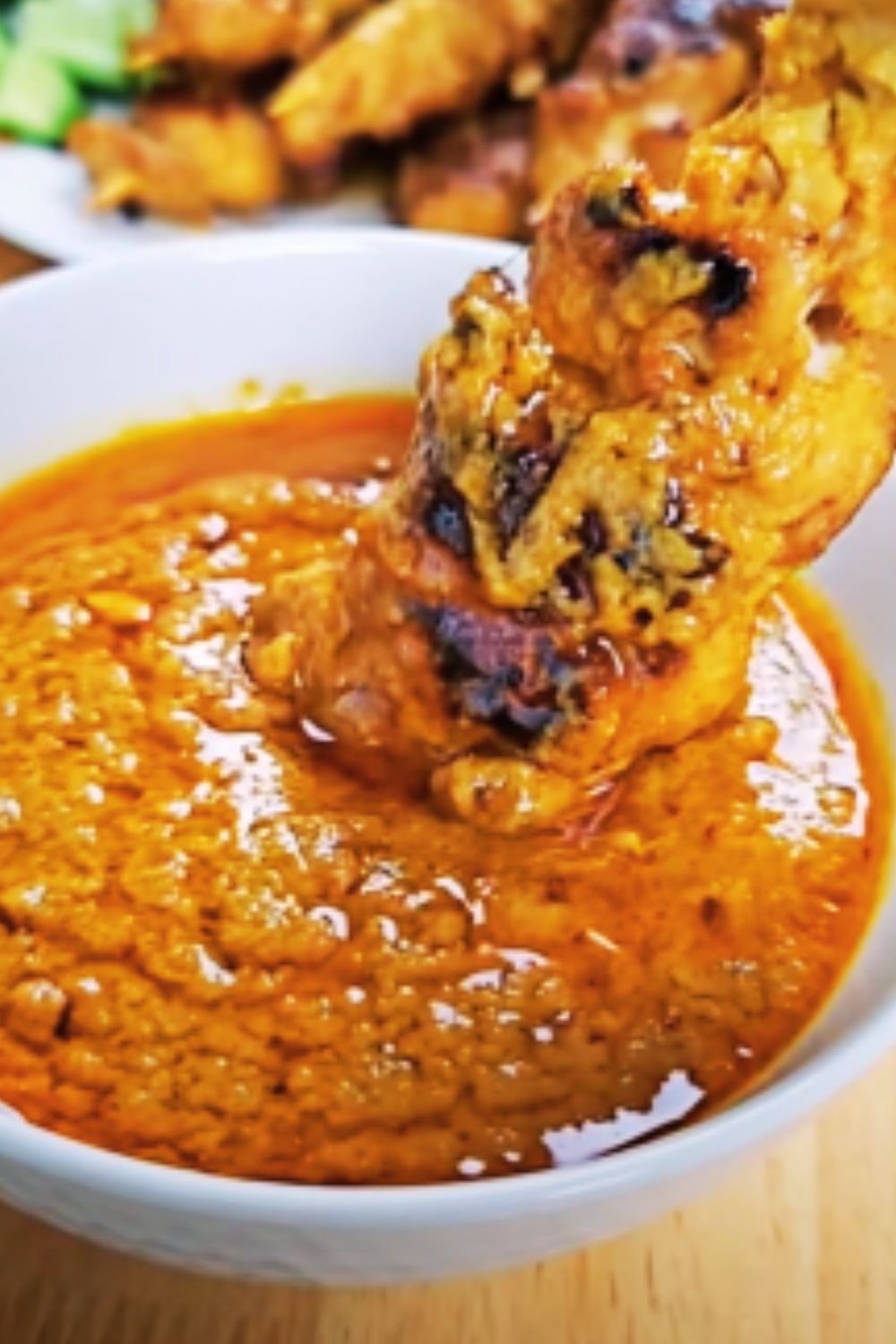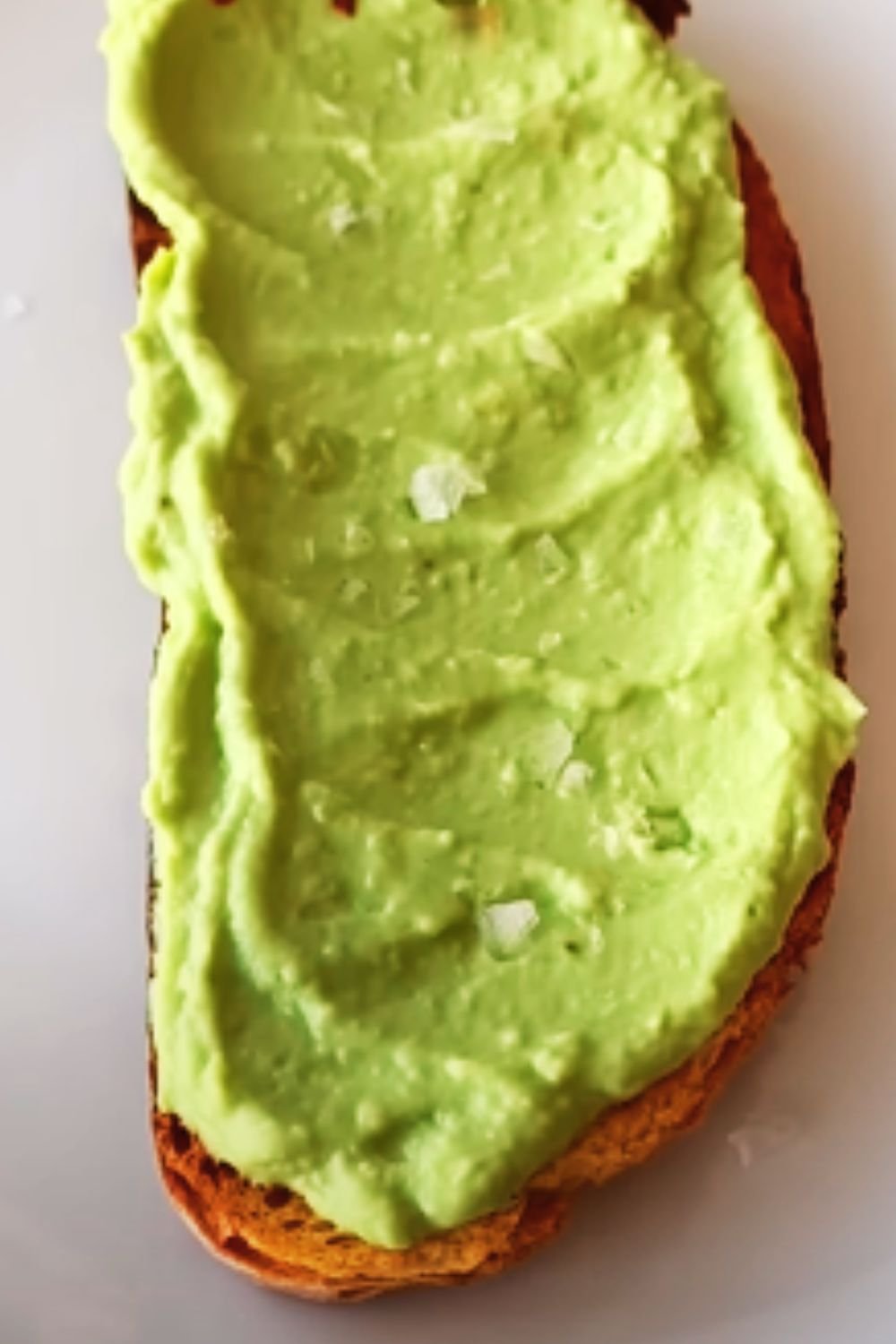There’s something magical about a good peanut sauce. That perfect balance of creamy, savory, sweet, and tangy flavors can transform even the simplest dishes into memorable meals. After years of experimenting with different recipes and techniques, I’ve finally perfected what I believe is the ultimate easy peanut sauce recipe that you can whip up in just 5 minutes.
This versatile sauce has become a staple in my kitchen, finding its way onto everything from spring rolls to noodle bowls. The beauty of this recipe lies not just in its incredible flavor but also in its simplicity – using pantry ingredients that you likely already have on hand.
What Makes This Peanut Sauce Special
What sets this peanut sauce apart is the perfect balance of flavors and textures. Many restaurant versions can be overly sweet or too thin, but this homemade version hits all the right notes:
- Creamy yet pourable consistency that clings beautifully to food
- Complex flavor profile with the perfect balance of sweet, savory, spicy, and tangy notes
- Customizable heat level to suit your personal preference
- No cooking required – just mix and serve!
- Stores beautifully for up to a week in the refrigerator
Whether you’re looking for a quick dipping sauce for vegetables, a flavor boost for grain bowls, or a marinade for grilled proteins, this peanut sauce delivers incredible results every time.
Ingredients for Perfect Peanut Sauce
The key to this sauce’s success lies in quality ingredients and balanced proportions. Here’s everything you’ll need:
| Ingredient | Amount | Notes |
|---|---|---|
| Natural creamy peanut butter | ½ cup | Look for varieties with just peanuts and salt |
| Low-sodium soy sauce | 2 tablespoons | Use tamari for gluten-free option |
| Rice vinegar | 1 tablespoon | Provides essential acidity |
| Maple syrup or honey | 1-2 tablespoons | Adjust based on desired sweetness |
| Sesame oil | 1 teaspoon | Adds rich, nutty depth |
| Garlic | 1 clove, minced | Fresh is best for bright flavor |
| Ginger | 1 teaspoon, grated | Adds subtle warmth and brightness |
| Lime juice | 1 tablespoon | Brightens all flavors |
| Sriracha or chili garlic sauce | 1-2 teaspoons | Adjust based on heat preference |
| Warm water | 3-4 tablespoons | For thinning to desired consistency |
Ingredient Substitutions and Variations
- Peanut butter: While natural peanut butter provides the best flavor, conventional varieties will work too. If using sweetened peanut butter, reduce the added sweetener.
- Soy sauce alternatives: Coconut aminos work well for a soy-free, lower-sodium option.
- Sweetener options: Brown sugar, coconut sugar, or agave nectar can replace maple syrup or honey.
- Spice variations: Thai red curry paste (1 teaspoon) can replace or complement the sriracha for a different flavor profile.
- Acid sources: Apple cider vinegar can substitute for rice vinegar, though the flavor will be slightly different.
How to Make Perfect Peanut Sauce Every Time
Creating this sauce couldn’t be simpler, but a few key techniques ensure perfect results:
- Start with room temperature peanut butter. Cold peanut butter straight from the refrigerator won’t blend as smoothly.
- Combine all ingredients except water in a medium bowl. Whisk thoroughly until the mixture is well combined.
- Add warm water gradually. Start with 2 tablespoons and add more as needed until you reach your desired consistency. The sauce will thicken slightly when refrigerated, so make it a touch thinner than your target consistency.
- Taste and adjust seasonings. This is the most important step! Peanut butters vary in saltiness and sweetness, so you may need to:
- Add more soy sauce for saltiness
- Add more maple syrup/honey for sweetness
- Add more lime or vinegar for tanginess
- Add more sriracha for heat
- Let the flavors meld. While you can use the sauce immediately, allowing it to rest for at least 15 minutes lets the flavors develop more fully.
Storage and Make-Ahead Tips
This peanut sauce is perfect for meal prep because it actually improves with time as the flavors meld together.
- Refrigerator storage: Transfer to an airtight container and refrigerate for up to 1 week.
- Before serving: Remove from refrigerator 15-30 minutes before using to allow the sauce to soften, as it will thicken when cold.
- Reheating: If you prefer a warm sauce, gently heat in the microwave in 10-second increments, stirring between each, or place the container in warm water for a few minutes.
- Thinning after storage: If the sauce has thickened too much in the refrigerator, whisk in 1-2 teaspoons of warm water until you reach your desired consistency.
Troubleshooting Common Peanut Sauce Issues
Even with a simple recipe, occasional challenges can arise. Here’s how to fix common problems:
Definition List of Peanut Sauce Problems and Solutions:
Sauce too thick : Add additional warm water, 1 teaspoon at a time, until reaching desired consistency.
Sauce too thin : Whisk in additional peanut butter, 1 teaspoon at a time.
Sauce too salty : Balance with additional sweetener (honey or maple syrup) and a touch more acid (lime juice).
Sauce too sweet : Add more soy sauce and lime juice to balance.
Sauce separating : Whisk vigorously or use an immersion blender to re-emulsify. Natural peanut butters can sometimes separate.
Sauce tastes flat : Add a pinch of salt and a squeeze of fresh lime juice to brighten all flavors.
10 Delicious Ways to Use Peanut Sauce
This versatile sauce works beautifully in countless applications. Here are my favorite ways to enjoy it:
- Classic dipping sauce for fresh spring rolls, satay skewers, or vegetable crudités
- Noodle sauce – toss with rice noodles, soba, or even spaghetti for a quick peanut noodle dish
- Grain bowl dressing – drizzle over Buddha bowls or rice bowls
- Marinade for tofu, chicken, or shrimp before grilling or baking
- Salad dressing – thin with additional water or lime juice for a creamy Asian-inspired salad dressing
- Sandwich spread – use as a flavorful alternative to mayo on wraps or sandwiches
- Stir-fry finisher – add to stir-fried vegetables or proteins in the last minute of cooking
- Dipping sauce for dumplings – gyoza and potstickers are elevated with a side of peanut sauce
- Pizza drizzle – finish a Thai-inspired pizza with a light drizzle
- Lettuce wrap sauce – perfect with chicken or tofu lettuce wraps

Building the Perfect Peanut Sauce Bowl
One of my favorite weeknight meals is a simple peanut sauce bowl. Here’s how to build your own:
Base (choose one or mix):
- Jasmine rice
- Brown rice
- Rice noodles
- Soba noodles
- Quinoa
- Cauliflower rice
Protein (choose one or more):
- Crispy baked tofu
- Grilled chicken
- Sautéed shrimp
- Tempeh
- Edamame
Vegetables (choose 3-4):
- Shredded red cabbage
- Julienned carrots
- Thinly sliced bell peppers
- Cucumber slices
- Steamed broccoli
- Snap peas
- Sliced radishes
- Baby spinach
Toppings (choose 2-3):
- Chopped peanuts
- Sliced green onions
- Fresh cilantro
- Thai basil
- Sesame seeds
- Lime wedges
- Crushed red pepper flakes
Nutrition Benefits of Peanut Sauce
Beyond its incredible taste, this peanut sauce also offers some impressive nutritional benefits:
| Nutrient | Benefits | Source in Peanut Sauce |
|---|---|---|
| Protein | Muscle repair, satiety | Peanut butter |
| Healthy fats | Brain function, sustained energy | Peanut butter, sesame oil |
| Vitamin E | Antioxidant, skin health | Peanut butter |
| Magnesium | Muscle function, bone health | Peanut butter |
| Potassium | Electrolyte balance, heart health | Peanut butter |
| Manganese | Metabolism, bone formation | Peanut butter |
| Antioxidants | Cell protection, reduced inflammation | Garlic, ginger |
| Gingerol compounds | Anti-inflammatory | Ginger |
| Allicin | Immune-supporting | Garlic |
For those tracking macros, a 2-tablespoon serving of this peanut sauce contains approximately:
- 120 calories
- 9g fat (mostly healthy unsaturated fats)
- 6g carbohydrates
- 4g protein
- 1g fiber
Peanut Sauce Around the World
Peanut sauce appears in various forms across different cuisines:
- Thai peanut sauce (Nam Jim Tua): Usually thinner with coconut milk and red curry paste
- Indonesian peanut sauce (Bumbu kacang): Often made with ground roasted peanuts and palm sugar
- Vietnamese peanut sauce: Typically lighter with hoisin sauce
- West African peanut sauce: Heartier with tomatoes and sometimes chicken or beef
- Dutch Satay sauce: Adapted from Indonesian cuisine, often contains ketjap manis (sweet soy sauce)
My recipe is most closely aligned with Thai-style peanut sauce but simplified for everyday cooking with readily available ingredients.

Frequently Asked Questions
Is this peanut sauce gluten-free? Yes, if you use tamari or coconut aminos instead of regular soy sauce. Always check your specific ingredient labels to confirm they’re certified gluten-free if that’s important to you.
Can I make this sauce nut-free? This particular sauce relies on peanut butter for its signature flavor and texture. For a nut-free alternative, consider using sunflower seed butter or tahini, though the flavor profile will be quite different.
How long does homemade peanut sauce last? When stored in an airtight container in the refrigerator, this sauce will maintain its quality for up to 7 days.
Can I freeze peanut sauce? Yes! This sauce freezes surprisingly well. Store in small containers or ice cube trays for up to 3 months. Thaw overnight in the refrigerator and whisk well before using, adding a little warm water if needed to restore the consistency.
Why is my peanut sauce separating? Natural peanut butters can sometimes cause separation. Simply whisk vigorously or blend again before serving. Using room temperature ingredients also helps prevent separation.
Can I make this sauce spicier? Absolutely! Add additional sriracha, chili garlic sauce, or a pinch of cayenne pepper to increase the heat level to your preference.
Is this peanut sauce vegan? Yes, if you use maple syrup instead of honey, this sauce is completely vegan.
What can I substitute for rice vinegar? Apple cider vinegar or white wine vinegar can work as substitutes, though they’ll slightly alter the flavor profile.
Perfect Pairings for Peanut Sauce
Complete your meal with these complementary flavors and dishes:
Appetizers:
- Fresh spring rolls
- Satay skewers (chicken, tofu, or tempeh)
- Cucumber salad with rice vinegar dressing
Main Courses:
- Thai-inspired noodle dishes
- Grilled chicken or tofu
- Vegetable stir-fries
Beverages:
- Thai iced tea
- Coconut water
- Sparkling water with lime
- Ginger lemonade
Desserts:
- Mango sticky rice
- Coconut sorbet
- Fresh tropical fruit plate
Final Thoughts
A good peanut sauce recipe is truly worth having in your culinary arsenal. It’s that rare combination of simple preparation and complex flavor that can elevate everyday ingredients into something special. With just a few minutes of effort, you’ll have a versatile sauce that can transform meals throughout the week.
I hope this recipe becomes a staple in your kitchen as it has in mine. The beauty of this sauce is that once you master the basic proportions, you can adjust and customize to make it uniquely yours. Whether you prefer it spicier, sweeter, or more lime-forward, this flexible recipe will adapt to your taste preferences.
Remember that the key to a great peanut sauce is balance – that perfect harmony of creamy, savory, sweet, tangy, and spicy elements coming together in each bite. Once you find your ideal balance, you’ll never want to be without a jar of this magical sauce in your refrigerator again.
Happy cooking!


